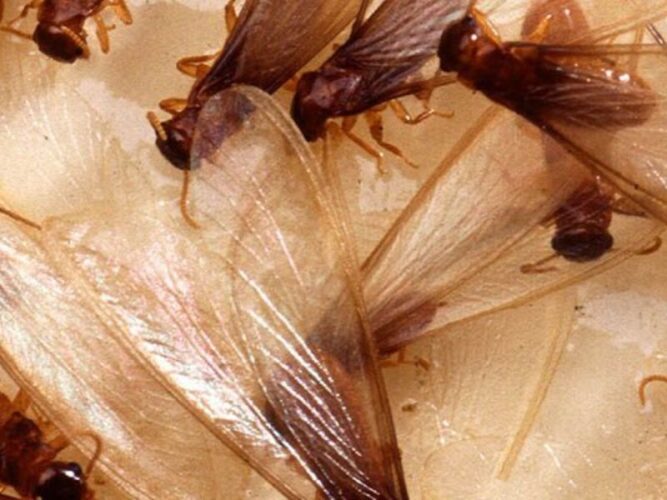Termites are known as silent destroyers, causing extensive damage to wooden structures and compromising the integrity of buildings. While most termites live underground and are not visible to the naked eye, there is one stage in their life cycle that stands out: the swarmer or flying termite.
Identifying termite swarmers is crucial in order to take timely action and prevent significant damage. In this article, we will explore how to identify termite swarmers or flying termites.
Termite Swarmers
Before delving into identification methods, it’s important to understand the role of termite swarmers. Termite swarmers are reproductive termites that are responsible for forming new termite colonies.
They typically emerge in large numbers during specific times of the year, often after a rain shower, when environmental conditions are suitable for their flight.
Physical Characteristics
Termite swarmers have distinct physical characteristics that set them apart from other insects. These features can aid in their identification:
Size and Color: Termite swarmers are usually about ¼ to ½ inch long, including their wings. They have straight, beaded antennae and two pairs of wings that are equal in length and size. The color of swarmers can vary depending on the species, ranging from black to brown or even translucent.
Body Segmentation: Termite swarmers have a distinct body segmentation, consisting of a head, thorax, and abdomen. Unlike ants, their bodies appear more cylindrical and less constricted at the waist.
Flying Behavior
Observing the flight behavior of insects can be helpful in distinguishing termite swarmers from other flying insects:
Swarming Activity: Swarms of termites can be observed circling around open doors, windows, and other sources of light. Attracted to artificial light and warmth, their swarming behavior often lasts only a few hours during the day.
Uneven Wings: Termites that can fly have two sets of wings that are identical in size and length. Close scrutiny, however, reveals that the ends of their wings are fringed or uneven.
This distinguishes them from flying ants, whose wings are typically longer in the front and shorter in the back.
Discarded Wings
After swarmers find a suitable location for mating and establishing a new colony, they shed their wings. The presence of discarded wings is a strong indication of a termite infestation. Look for piles of discarded wings near windows, doors, or other entry points, as well as in spider webs or on the ground near the exterior of the building.
Professional Inspection
If you suspect the presence of termite swarmers or a termite infestation on your property but are unsure about the identification, it is advisable to seek the assistance of a professional pest control company. Trained experts can accurately identify the species of termites and provide a comprehensive inspection to assess the extent of the infestation.
Conclusion
Identifying termite swarmers or flying termites is crucial for early detection and control of termite infestations. By understanding their physical characteristics, flight behavior, and the presence of discarded wings, homeowners can take prompt action to protect their properties from costly termite damage.
If in doubt, it is always wise to consult a professional pest control service to ensure accurate identification and effective treatment. Remember, swift identification and intervention can save you from significant financial and structural consequences in the long run.

